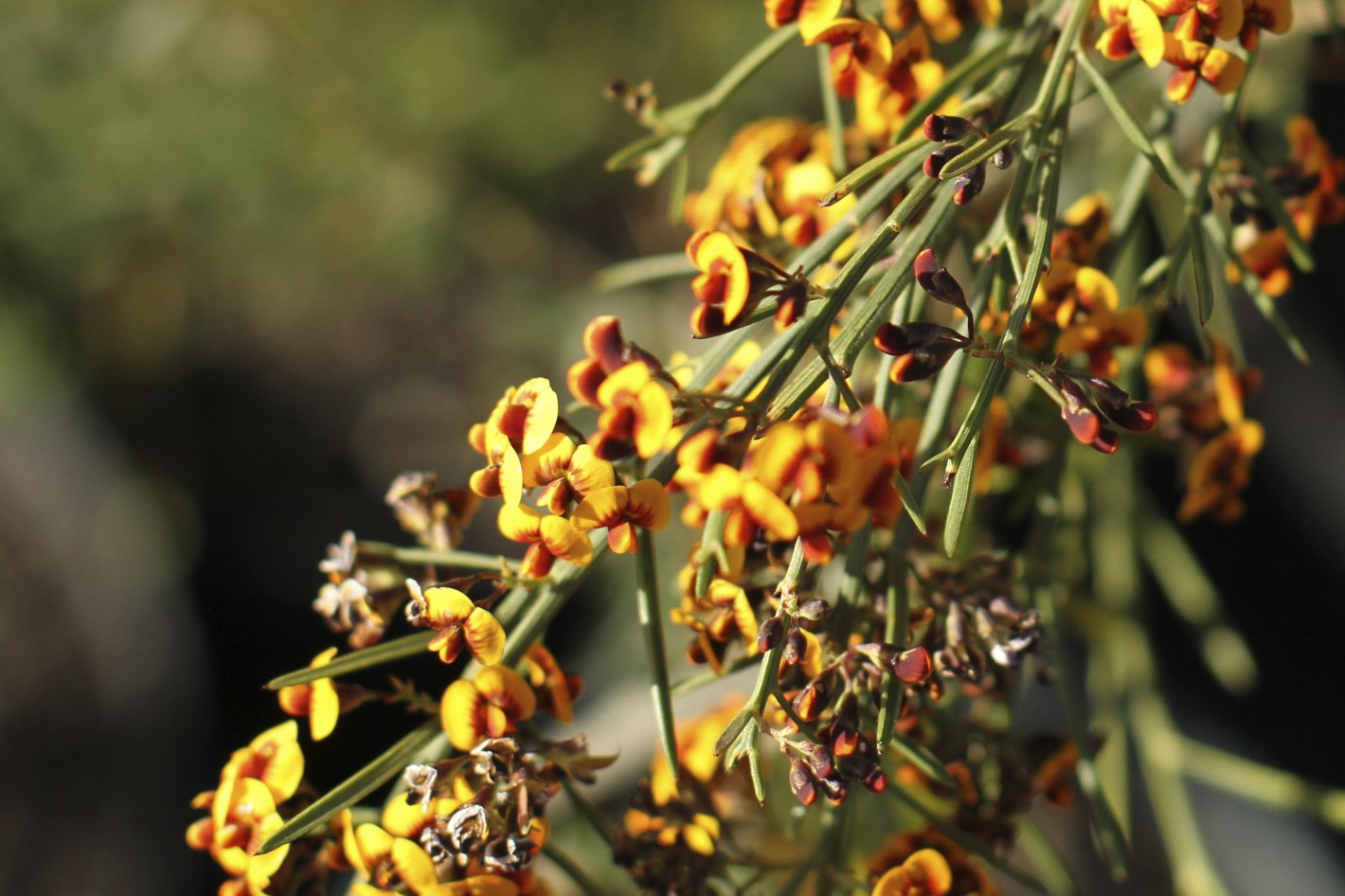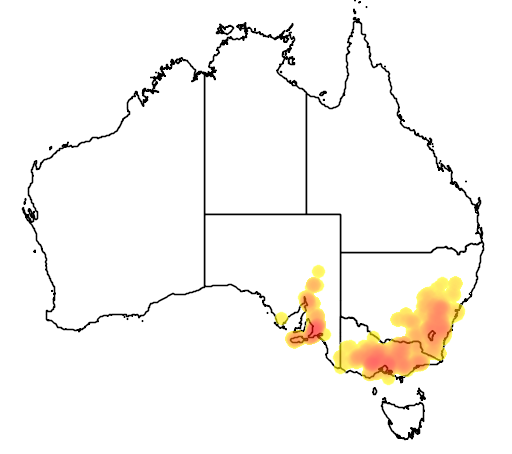Description
Common names
Slender Bitter-pea, Narrow-leaf Bitter-pea.
Scientific names
Daviesia leptophylla, Daviesia virgata.
Family
Fabaceae.
Genus
Daviesia.
Name origin
Daviesia, after botanist the Rev. Hugh Davies (1739-1821). Mimosoides, mimosa-like, referring to similarity of "leaves" to those of Acacia species.
Rainfall
500mm.
Growth rate
Fast.
Growth height
Up to 2m.
Presence in Australia
Quite widespread in most catchments and districts. Less common in the drier areas to the west.
This specie has been identified in the following Australian states: NSW, ACT, Vic, SA.
Habitat
Shrubland to dry sclerophyll forest, dry open sites, usually on skeletal soils.
Habit
Broom-like erect shrub to 2m high, upper branches often "leafless", with dull yellow-green linear "leaves" to 6.5 mm long.
Similar species
Has narrower "leaves" and flowers slightly later than Leafy Bitter-pea.
Site preference
Well-drained soils. Tolerates frost.
Flowering
Yellow and red-brown/orange, Oct-Dec.
Seed collection
Early Dec to late Jan. Monitor very closely as seeds released immediately or within 1-2 days of maturity. To ensure collection, cover fruiting branches with nylon stockings or paper bags after flowering. Ripe pods light-brown and brittle and rattle when shaken, with dark-coloured seed. May be difficult to obtain seed in useful quantities. Long storage life.
Propagation
From scarified seed. Soak in near-boiling water for about 30 seconds, before cooling rapidly under flowing cold water. Alternatively soak in cold water for several hours. Dry to prevent rotting, before sowing. Germination takes 3-8 weeks. Suitable for direct seeding in pots (2-3 seeds per pot).
Regeneration
From seed or suckers, particularly after fire.
Shade and shelter
Useful low-level cover in windbreaks.
Land protection
Useful understorey in recharge plantings. Legume, improves soil fertility through "fixing" nitrogen.
Wildlife
Good habitat. Flowers are a pollen and excellent nectar source for various native insects and birds.
Ornamental
Very decorative. Interesting foliage and attractive perfumed flowers. Plant in clumps to form dense thickets for best effect. Pruning encourages dense growth.


